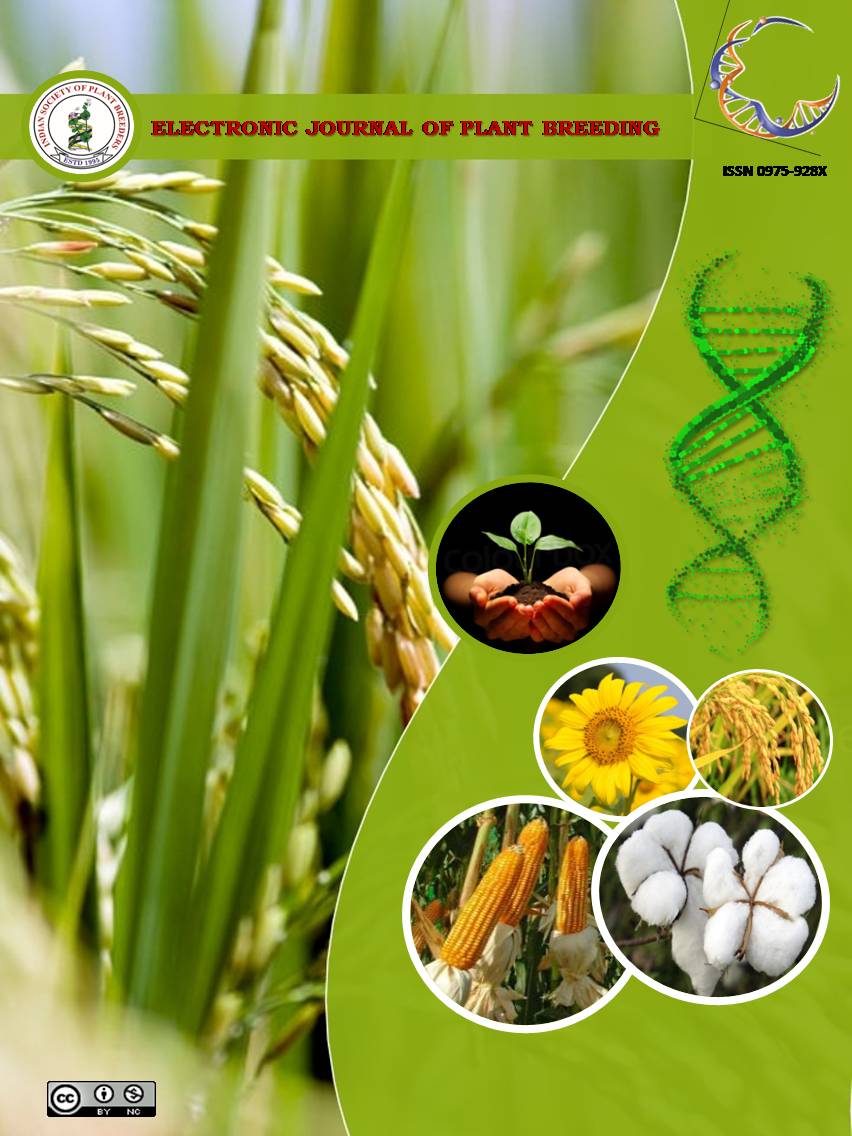Exploitation of induced variation for enhancing the biomass production in rice (Oryza sativa L.)
Abstract
A study was undertaken for screening the EMS induced mutants of N22 for identifying high biomass mutants. In a population of 10000 mutants, 280 mutants were selected phenotypically and forwarded in which dry matter production along with 18 other traits including days to fifty per cent flowering, plant height, number of tillers per plant, number of productive tillers per plant, efficient tillering percentage, flag leaf length, flag leaf width, panicle length, number of filled grains per panicle, number of chaffy grains per panicle, spikelet fertility, hundred grain weight, grain length, grain breadth, wet biomass, grain yield , harvest index and vein density were characterized, Physiological traits namely SPAD reading, photosynthetic rate, transpiration rate, stomatal conductance and Ci/Ca ratio were also recorded. A total of 58 per cent had higher grain yield than N22 while a total of 214 mutants recorded with high dry matter production than N22. In terms of physiological efficiency, genotypes with high vein density are associated with high biomass as in the case of any C4 plants. Wild type N22 has 50 minor veins and 8 major veins while 56 mutants possessed more than 50 minor veins and 10 major veins. Two mutants namely PL.No.36 and Pl.No.183 were found to be promising, which recorded high dry matter production with more number of minor veins, had high chlorophyll content and high photosynthetic rate.

It is certified that:
- The corresponding author is fully responsible for any disputes arising due to the publication of his/her manuscript.
- The article has been seen by all the authors who are satisfied with its form and content.
- The sequence of names of authors in the by-line is as per their relative contribution to this experiment, giving due credit to all scientists who made notable contribution to it.
- All the authors fully understand that inclusion of any other co-authors or exclusion of any co-authors is not possible once the article has been submitted to the journal.
- The corresponding author takes full responsibility for this article.
- The address of the organization where the research was conducted is given.
- The article is exclusive for this journal, and the results reported here have not been sent (and will not be sent during its consideration by this journal) for publication in any other journal.
- Authors agree to abide by the objective comments of referees and do agree to modify the article into a short note as per the recommendation, for publication in the Electronic Journal of Plant Breeding.
- If published in Electronic Journal of Plant Breeding, the copyright of this article would vest with the Indian Society of Plant Breeders, who will have the right to enter into any agreement with any organization in India or abroad engaged in reprography, photocopying, storage and dissemination of information contained in it, and neither we nor our legal heirs will have any claims on royalty.


